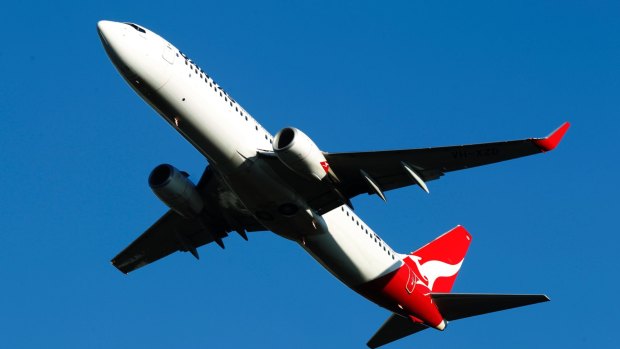This was published 7 years ago
Flight times: Why flight times are longer than they were 40 years ago
By Hugh Morris
Today, a non-stop flight from New York to Houston, Texas, takes about four hours. In 1973, the same flight would have taken just over two and a half hours. So much for progress.
But this is not an isolated case: flight times are getting longer.
London to Edinburgh takes, on average, 10 minutes longer than it did in the mid-Nineties; Madrid to Barcelona takes up to 20 minutes longer; while New York to Chicago is likely to take two hours and 50 minutes rather than the two and a half hours it took in 1996.

Flight times are getting longer for a number of reasons, including fuel costs.Credit: Louise Kennerley
There are a number of reasons that more time is needed for airlines to fly from A to B, but one explored recently is fuel costs.
According to Business Insider, as the price of fuel rose in the Noughties, from $US0.70 ($A0.94) per gallon to over $US3, airlines realised they could save millions of pounds per year by flying their planes slower, therefore using less fuel – but arriving at the destination later. A gallon of jet fuel cost $US1.59 at the end of 2016.
See also: Plane secrets: 10 things on an aircraft you never knew about
For example, in 2008, Associated Press reported that American airline JetBlue saved $US13.6million a year by adding two minutes onto the length of each flight.
It is not a particularly new tactic.
In 2013, the Telegraph, London reported that budget airline Ryanair told its pilots to fly slower to save fuel – and therefore money – but add two minutes onto every hour's flying time.
In 2014, Reuters reported that jet fuel consumption in the US, after peaking in 2005, fell more than 15 per cent in 10 years, the equivalent of more than 200,000 barrels per day.
Traditionally, the typical flying speed (878km/h-925km/h) is a trade-off between commercial pressures and fuel consumption – reaching a destination quicker is not only more appealing to customers but also minimises crew costs and ensures a new load of passengers quicker.
Another reason flight times are thought to be growing is due to a practise known as "schedule padding".
"The accusation is that airlines are coming under increasing pressure to have as high an on-time performance score (OTP) as possible, and are consequently allowing themselves plenty of wiggle room when allotting flight times," the article read.
See also: What happens when there's a medical emergency on a flight?
A report by aviation analysts OAG showed how the scheduled flight times of a number of different routes has grown between 1996 and 2015.
Jim Paton, a senior lecturer in the Department of Air Transport at Cranfield University, told the BBC: "The practice of buffering the airline schedule times is something that is very common, almost universal in Europe and in other parts of the world."
However, airlines deny the practise exists.
John Grant, a senior analyst at OAG, says it is more complicated.
"It's not as simple as assuming airlines have increased block times to reduce the risk of being late," he said.
OAG's report also pointed out how congestion at airports meant that it took longer for aircraft to take-off after leaving the gate – a time that is included in the scheduling.
Top 10: The world's longest flights
- Delhi – San Francisco, Air India, 15,128km
- Auckland – Dubai, Emirates, 14,201km
- Dallas – Sydney, Qantas, 13,804km
- San Francisco – Singapore, United Airlines, 13,593km
- Johannesburg – Atlanta, Delta, 13,581km
- Abu Dhabi – Los Angeles, Etihad, 13,502km
- Dubai – Los Angeles, Emirates, 13,420km
- Jeddah – Los Angeles, Saudia, 13,409km
- Doha – Los Angeles, Qatar Airways, 13,367km
- Dubai – Houston, Emirates, 13,145km
The Telegraph, London
Sign up for the Traveller newsletter
The latest travel news, tips and inspiration delivered to your inbox. Sign up now.